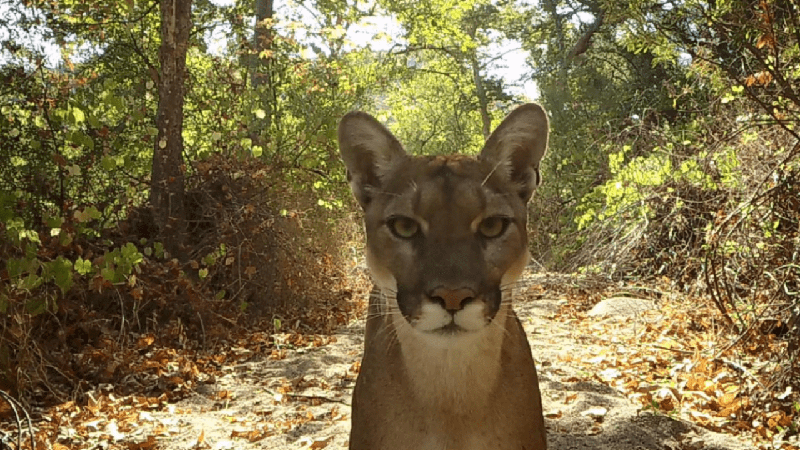
Mountain lion near I-15 in Riverside County Photo by Winston Vickers, UC Davis
By LAURA FRIEDMAN, Special to CalMatters
Assemblymember Laura Friedman represents the 43rd Assembly District.
Many of us have never seen a mountain lion up close and personal, yet lions have a distinct presence among us. From security camera footage to social media posts of P-22 — the famed mountain lion in Southern California — you might think mountain lions are thriving. You’d be wrong.
Scientists fear that as their turf and their gene pool continue to shrink, cougars (as they sometimes are called) could go extinct within decades in regions where they now roam. Fast cars, rat poison and a fragmented habitat are just some of the deadly challenges faced by mountain lions and other imperiled species. When a lion known to biologists as P-54 was struck by a car and killed in June, her death marked three generations of mountain lions lost on dangerous roads in the Santa Monica Mountains. Her son had died months earlier and her mother died in 2018. A month later, P-89 died on the 101 Freeway in Los Angeles, becoming the fourth cougar in the area to die by car strikes in five months.
This grim reality has led me to join forces with Assemblymembers Ash Kalra and Kevin Mullin to introduce Assembly Bill 2344, which would bring more wildlife crossings to our highway system. By prioritizing and investing in freeway overpasses, underpasses and other critical improvements, we can make our roads safer for wildlife and drivers.
Butterflies, foxes, desert tortoises, California newts and other wildlife have lost their ability to move freely through their home ranges because of poorly planned roads and development.
The UC Davis Road Ecology Center has been tracking wildlife-vehicle collisions and identifying hotspots on our highways. From 2016 to 2020, more than 44,000 wildlife-vehicle crashes were reported on California roads, resulting in human deaths, injuries and property damage. Collisions with wildlife are believed to go vastly unreported.
Earlier this year, I joined the groundbreaking celebration in Agoura Hills of the Wallis Annenberg Wildlife Crossing, which will be the world’s largest wildlife bridge when it’s completed in 2025. Such a project should inspire us to do better across the state. Our bill, the Safe Roads and Wildlife Protection Act, would require Caltrans and the California Department of Fish and Wildlife to identify wildlife barriers and prioritize crossings when building or improving roads and highways.
These projects can be as simple as improving existing culverts or installing directional fencing to facilitate wildlife movement. They can also be overpasses and underpasses in areas with high rates of wildlife-vehicle collisions and where the movement of imperiled species is constrained.
Read more of ‘Wildlife crossings make roads safer for animals and humans’ on CalMatters.org.
CalMatters.org is a nonprofit, nonpartisan media venture explaining California policies and politics.